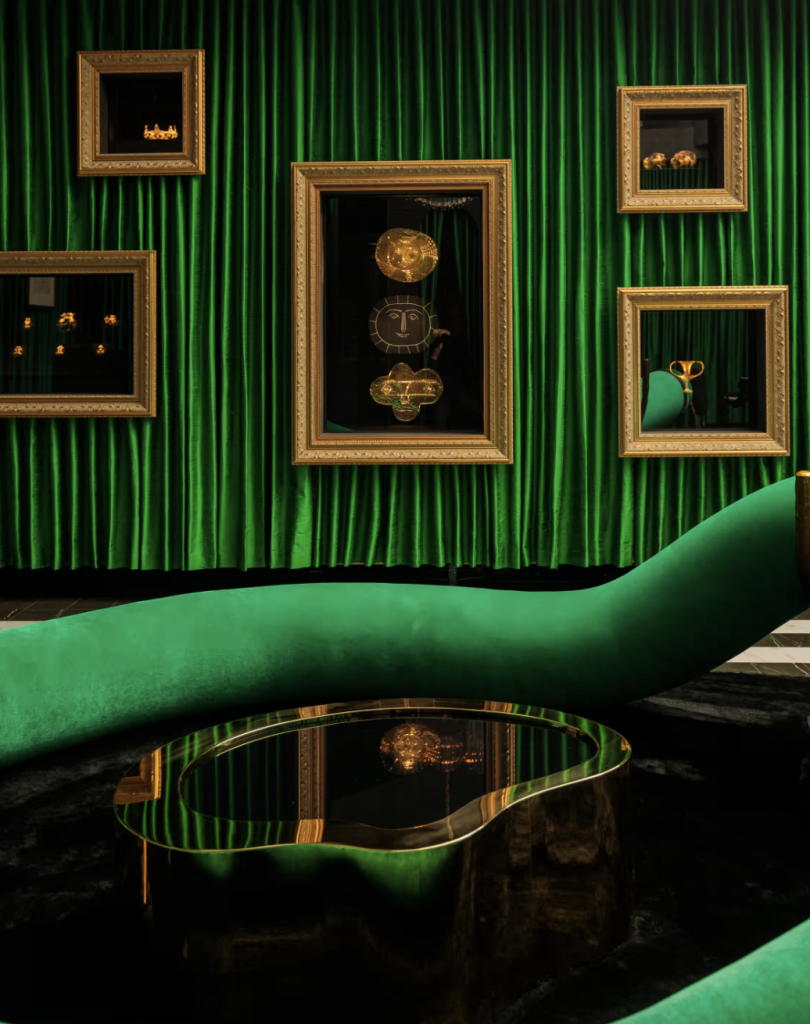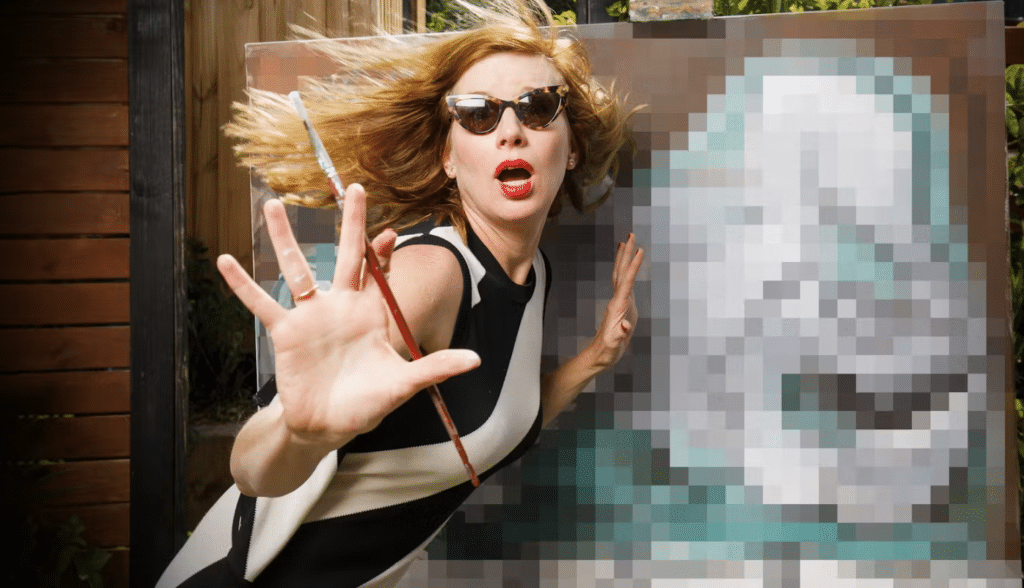We know by now that David Walsh’s MONA gallery can be a site for provocation and controversy and its recent installation by Kirsha Kaechele titled ‘The Ladies Lounge’ was no different.
Kaechele, a curator and artist who is also married to Walsh, conceived The Ladies Lounge in 2020 as a luxurious women’s only space to enjoy ‘high tea and other ladylike pleasures, surrounded by priceless works of art including several that demonstrate the genius of Picasso, all the while hosted and entertained by the fabulous butlers.’ No boys allowed, she said (except the butlers!)

The artwork has now in 2024 transcended the museum walls, with the debate about discrimination making it into the courtroom, international news and of course the spicy comments section on many social media channels. The artwork had to shape-shift and now it arguably exists in more than one place, in a toilet and rent-free in the minds of many. Ironically this example and perception of gate-keeping has opened a conversation to all.

The backstory is that The Ladies Lounge opened several years ago at MONA in Hobart but came to national and international attention earlier this year when a male-identifying visitor from New South Wales made an anti-discrimination complaint to the Tasmanian Civil and Administrative Tribunal (TASCAT) after he was denied entry.
He claimed he didn’t get to experience what was inside the Ladies Lounge while having paid the $35 MONA gallery entry ticket. Kaechele later stated that this man’s and men’s ‘experience of rejection is the artwork’ and that ‘it was very interesting to have artwork come to life in a courtroom.’ It was reported that when in court, Kaechele said the Ladies Lounge was both a physical artwork and a performance artwork reflecting upon gender inequality, citing other examples of Australian women’s experiences of exclusion and discrimination.
The Guardian reported that when Kaechele took the stand, a group of women had assembled in the audience, all dressed in the same skirt and suit jacket get-up with pearl necklaces and red lipstick, some were sighted reading the newspaper or a feminist text, and were said to be seen performing discreet choreographed movements in the court like crossing their legs or peering over spectacles, they exited the court to the tune of Robert Palmer’s song Simply Irresistible.
Moorilla Estate Pty Ltd lost the case to the visitor and TASCAT deputy president Richard Grueber published his findings, which included that refusing ‘entry to the Ladies Lounge constituted direct discrimination’.
Grueber also shared ‘Moorilla says that refusal of entry to men is an intrinsic aspect of the Ladies Lounge artwork and that it therefore cannot be modified to permit entry by men. If an order is made requiring Moorilla to permit entry by men then Mona would cease to exhibit the artwork. I accept that the Ladies Lounge would cease to have the artistic character that defines it if men are permitted entry.’ In conclusion ‘Within 28 days from the date of this order Moorilla Estate Pty Ltd is to cease refusing entry to the exhibit known as the Ladies Lounge at the Museum of Old and New Art by persons who do not identify as ladies.’

28 days has passed and in that interim the exhibit was ‘closed for reform’.
Then, it came to light that an artwork some may have thought to be a Picasso which was part of the original Ladies Lounge installation (though hung upside down) was moved to be on view in a female toilet. Previously the loo at MONA was unisex but changes were seemingly afoot.
Under section 26 of Tasmania’s Anti-Discrimination Act, discrimination is permitted if the location is a toilet, school or church. Kaechele later admitted to painting the lauded piece herself…in the style of Picasso, it’s also no longer on display. The Picasso estate responded to the news but have decided to not take further action following an apology from Kaechele. Other items on display were also outed by Kaechele as dupes of valuables, from plastic jewellery to polyester ‘fur’ perhaps in an attempt to fill the Lounge with invaluable objects to add to a possible perceived ‘exclusive aura’ of the Ladies Lounge.
It seems that The Ladies Lounge not only raises issues of equality but also veritas. As Kaechele writes in her latest blog, the rules and illusion in the space raise issues such as ‘gender, freedom, power structures, authenticity, and value. All these illusions built the fantasy for those who are afforded the experience of the Lounge, and, importantly, those who are excluded.’

So, where to now?
The ABC now reports that MONA will appeal the decision of the Tasmanian tribunal with the Supreme Court and are said to be planning to present an argument which addresses the ‘supremacy of men’. There has been suggestion that the work Ladies Lounge presents equal opportunity to inequality, as the ABC quoted Former Tasmanian anti-discrimination commissioner and post doctoral fellow at the University of Tasmania’s law faculty Dr Robin Banks who suggested that while he ‘was treated differently in terms of not being able to pass through a doorway, he experienced the piece as intended.’
The ABC reported in the same piece; ‘Dr Banks said the tribunal focused on the disadvantage needing to be very specific, and she disagrees with the tribunal’s interpretation of the law. “The general disadvantage that women experience and the general exclusion from power in places that women experience is a disadvantage,” she said. She said the Ladies Lounge promoted equal opportunity “by educating people about that experience”. “It’s continuing to educate people about that experience of exclusion, and one of the ways you help people change is by helping them to walk a mile in somebody else’s shoes.”‘
You can read Kaechele’s first person account of the ongoing artwork, here in an Interview about the Ladies Lounge and in Art is not truth: Pablo Picasso where she declares;
‘This mad and magical saga has changed me. I’m awed by the transformative power of art. It has deepened my connection to women and made a feminist of me. My love for women burns brighter. I started as a conceptual artist and ended up an activist. And it’s made me reflect more profoundly on gender imbalance. I always hated hardcore feminism, but voila! Everything I hate I become.’
The hearing date is yet to be set, we will seek to update you here, and you can follow Kirsha Kaechele on Instagram here.